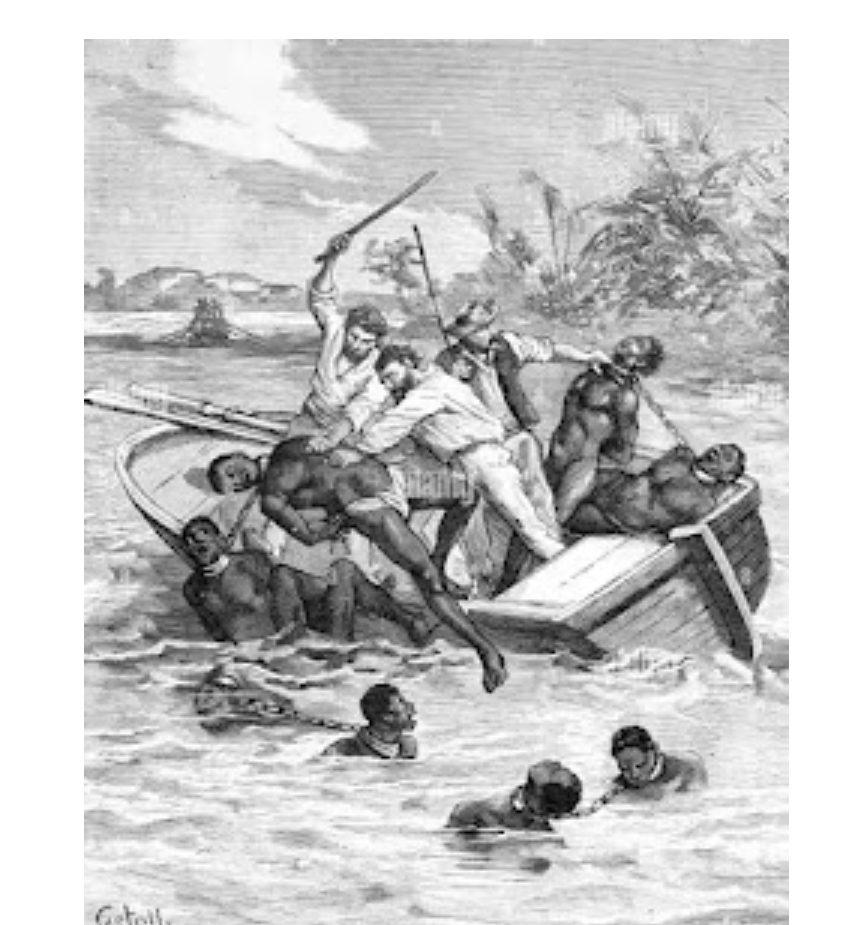
In 1781, the Zong massacre began. This was a mass killing (at sea) of more than 130 enslaved Black Africans by the crew of the British slave ship Zong during the Middle Passage. Owned by England, when the Zong sailed from Accra with 442 slaves on August 18, 1781, it had taken on more than twice the number of people that it could safely transport.
In the 1780s, British-built ships typically carried 1.75 slaves per ton of the ship’s capacity; on the Zong, the ratio was 4.0 per ton. A British slave ship of the period would carry around 193 slaves and it was unusual for a ship of the Zong’s small size to carry so many. After taking on drinking water at São Tomé, the Zong began its voyage across the Atlantic Ocean to Jamaica on September 6th. On November 18, the ship neared Tobago in the Caribbean without stopping for water supplies.
It is unclear who, if anyone, was in charge of the ship at the time, Luke Collingwood, James Kelsall, and Robert Stubbs were in decision-making positions. According to historian James Walvin, the breakdown in command explains the navigational errors and the absence of checks on supplies of drinking water.
On November 28, the crew sighted Jamaica at a distance of 27 nautical miles but misidentified it as the French colony of Saint-Domingue on the island of Hispaniola. Zong continued on its westward course, leaving Jamaica behind. This mistake was recognized only after the ship was 300 miles (480 km) leeward of the island. Overcrowding, malnutrition, accidents, and disease had already killed several mariners and approximately 62 Africans.
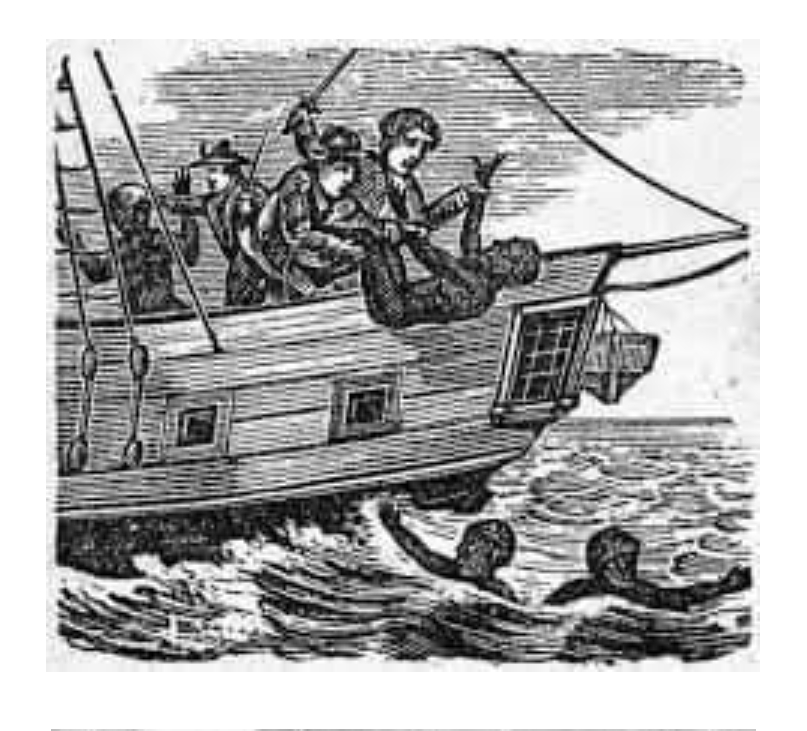
James Kelsall later claimed that there was only four days’ water remaining on the ship when the navigational error was discovered and Jamaica was still 10–13 sailing days away. If the enslaved people died onshore, the Liverpool ship-owners would have had no redress from their insurers. Similarly, if the enslaved people died a “natural death” (as the contemporary term put it) at sea, then insurance could not be claimed.
If some enslaved people were thrown overboard in order to save the rest of the “cargo” or the ship, then a claim could be made under “general average”. (This principle holds that a captain who jettisons part of his cargo in order to save the rest can claim for the loss from his insurers.) The ship’s insurance covered the loss of enslaved people at £30 per person.
On November 29th, the crew assembled to consider the proposal that some of the enslaved people should be thrown overboard. James Kelsall later claimed that he had disagreed with the plan at first but it was soon unanimously agreed. 54 women and children were thrown through cabin windows into the sea.
On December 1, 1781, 42 male enslaved people were thrown overboard, and 36 more followed in the next few days. Another ten, in a display of defiance, chose to commit suicide by jumping into the sea. Having heard the shrieks of the victims as they were thrown into the water, one of the captives requested that the remaining Africans be denied all food and drink rather than thrown into the sea. The crew ignored this request.
In total, 142 Africans were killed by the time the ship reached Jamaica. The account of the King’s Bench trial reports that one enslaved person managed to climb back onto the ship after being thrown into the water. The crew claimed that the enslaved people had been jettisoned because the ship did not have enough water to keep all the enslaved people alive for the rest of the voyage. This claim was later disputed.
The Gregson slave-trading syndicate, based in Liverpool, owned the ship. They had taken out insurance on the lives of the enslaved people as cargo. Finally, according to the crew, when the ship ran low on drinking water following navigational mistakes, the crew threw enslaved people overboard into the sea.
After the slave ship reached port at Black River, Jamaica, Zong’s owners claimed to their insurers for the loss of the enslaved people. When the insurers refused to pay, the resulting court cases (Gregson v Gilbert (1783) 3 Doug. KB 232) held that in some circumstances, the murder of enslaved people was legal and that insurers could be required to pay for those who had died.
The jury found for the slavers, but at a subsequent appeal hearing the judges, led by Lord Chief Justice, the Earl of Mansfield, ruled against the syndicate owners, due to new evidence that suggested the captain and crew were at fault.
Following the first trial, Olaudah Equiano, a freedman, brought news of the massacre to the attention of the anti-slavery campaigner Granville Sharp, who worked unsuccessfully to have the ship’s crew prosecuted for murder.
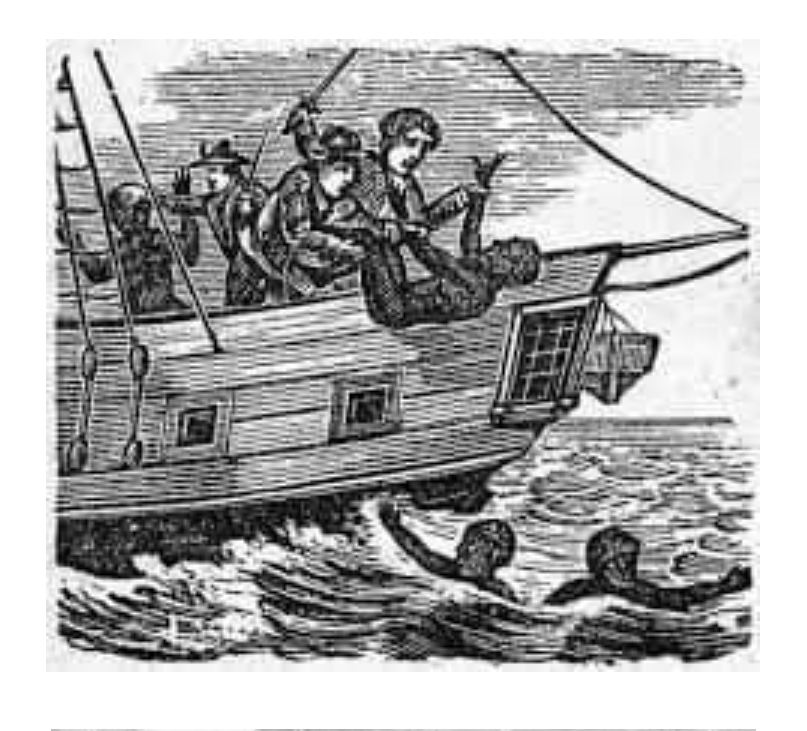
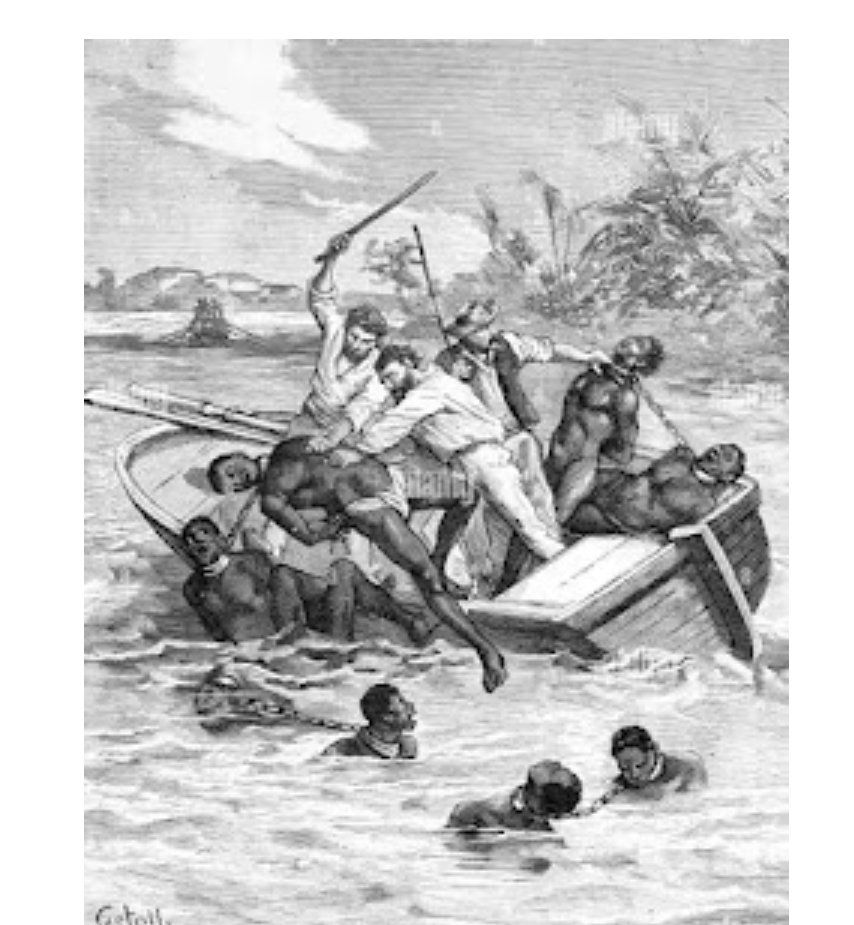
Because of the legal dispute, reports of the massacre received increased publicity, stimulating the abolitionist movement in the late 18th and early 19th centuries; the Zong episodes were increasingly cited as a powerful symbol of the horrors of the transoceanic route by which enslaved people were brought to the New World. The non-denominational Society for Effecting the Abolition of the Slave Trade was founded in 1787.
The next year Parliament passed the Slave Trade Act 1788, its first law regulating the slave trade, to limit the number of enslaved people per ship. Then, in 1791, Parliament prohibited insurance companies from reimbursing ship owners when enslaved people were murdered by being thrown overboard. The massacre has also inspired works of art and literature.
It was remembered in London in 2007, among events to mark the bicentenary of the British Slave Trade Act 1807, which abolished British participation in the African slave trade (though stopped short of outlawing slavery itself). A monument to the murdered enslaved people on Zong was installed at Black River, Jamaica. (African American Registry, 2021)
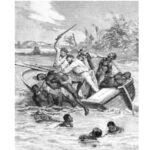
Unlock Exclusive Chrismas Deals! Shop now on Amazon through my link https://amzn.to/4fVQicP and discover:
Up to 50% off top brands
Fast & reliable shipping
Secure checkout
Thank you and Happy shopping!










Leave a Reply